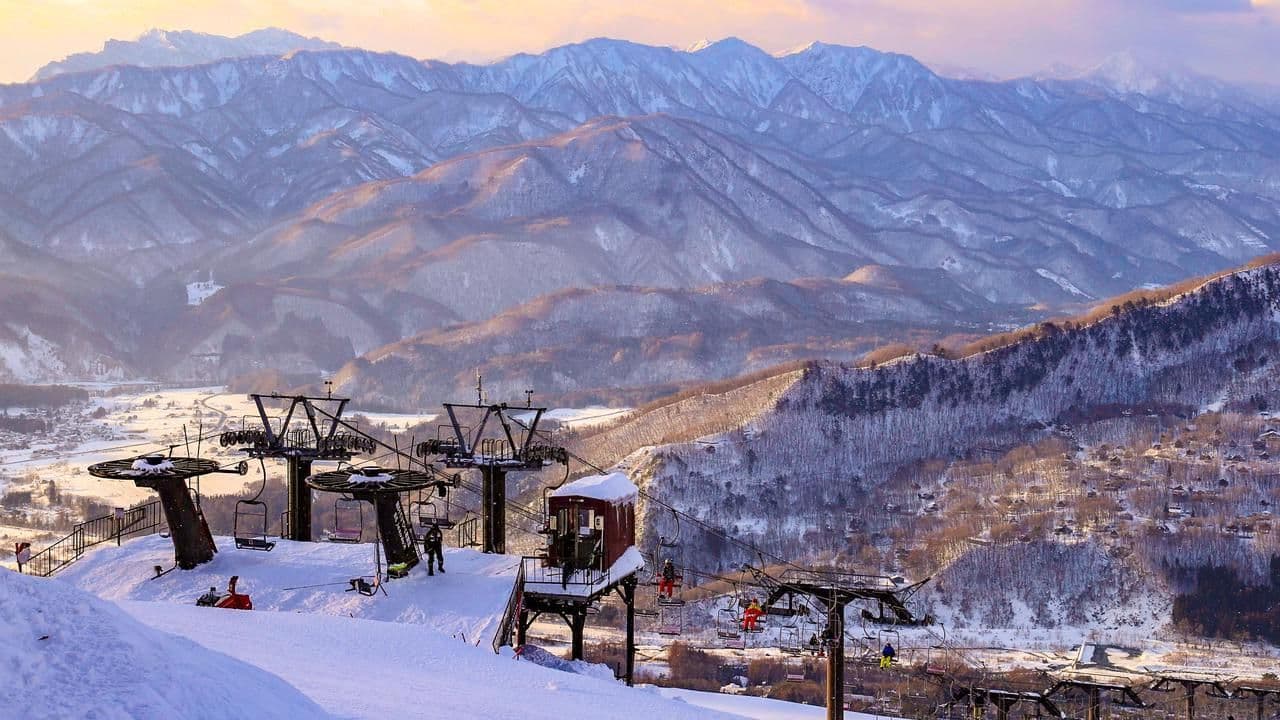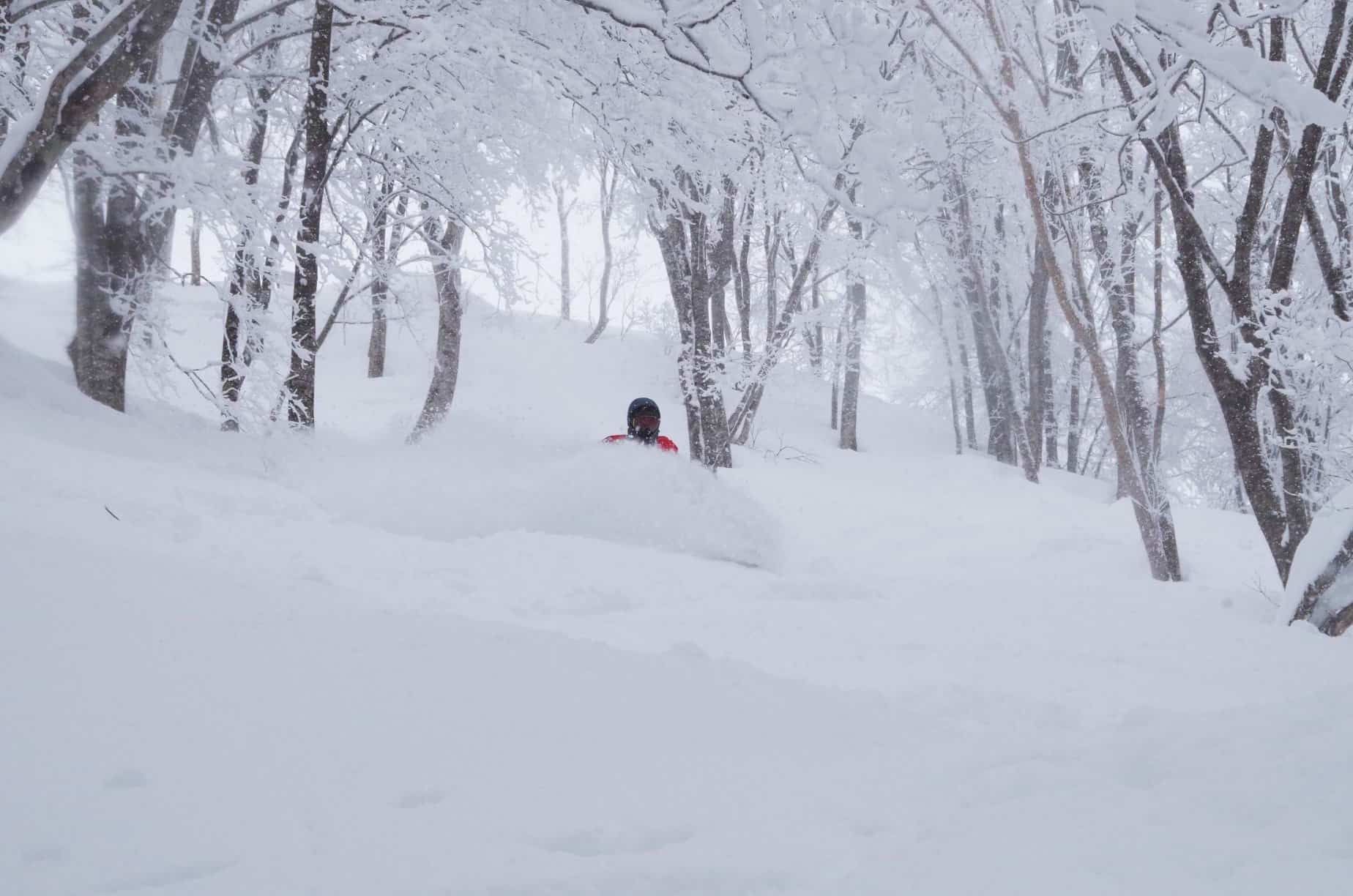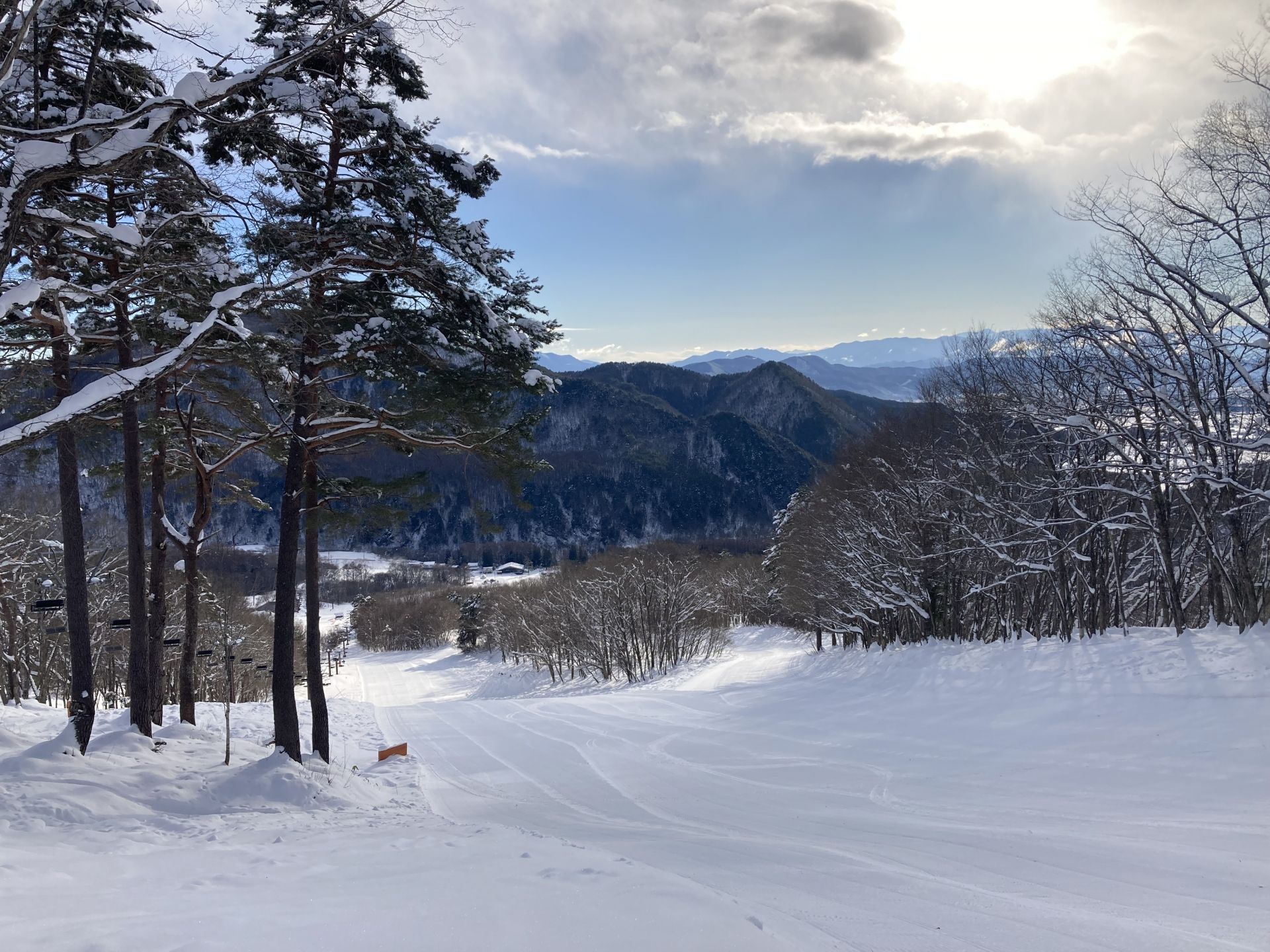Hakuba 47
Hidden Lines in Hakuba’s Shadow

白馬し七
Giddy-Up in the Japanese Alps
The first thing you’ll notice when you roll into Hakuba 47 is the feeling of being hugged by the surrounding peaks. You’re deep in the Northern Japanese Alps, and the jagged skyline is a constant reminder that you’re somewhere serious. Unlike the sprawling, high-profile resorts nearby, Hakuba 47 has a more compact, concentrated vibe — a place that knows exactly what it’s about.
When the sun cracks over the ridge and the gondola hums to life, there’s a quiet excitement in the base area. The crowd is a mix of local die-hards, visiting internationals in the know, and a handful of park rats eyeing up the massive kickers. It’s not chaotic, just a steady pulse of riders clicking in and heading up. If you’re coming midweek, you’ll feel like you’ve stumbled into your own private pow reserve.

Hakuba 47’s roots go back to the late ’80s ski boom, but it’s avoided the overdevelopment trap. Instead, it’s stayed lean — a small base area with essential services, quick access to the slopes, and a top-to-bottom connection to Goryu that opens up your options. You get that mid-sized resort intimacy with a gateway to a much larger playground.
For non-ski time, the base is functional rather than glamorous — a few eateries, rental shops, and a ticket counter. If you want nightlife, you’ll hop a shuttle to Happo, Wadano, or Echoland. But that’s part of the appeal here. At 47, it’s all about the riding. You wake up, ride hard, and rest easy.
Weekends and holidays can bring more locals from Nagano City and beyond, so there’s a bit more hustle in the lift lines. But compared to Hakuba’s busiest spots, it’s still relatively relaxed. The savvy know to work the gondola early, duck into the tree gates mid-morning, and let the crowds fade before hitting the groomers again in the afternoon.
Resort Stats
- Vertical800m (1614m → 814m)
- Snowfall~12m
- Terrain 30% 40% 30%
- Tree Riding
- Lift Pass$39
- Lifts1 gondola, 1 quad, 4 pairs
- Crowds
- Out of BoundsAllowed with patrol permit
- Night Skiing
- Family Friendly
- Trails8
- Skiable Area~80ha
- VibeTight pow zone, park energy, mellow base
Trail Map

Powder & Terrain
Hakuba 47 isn’t a place where you get lost in endless trail maps — you learn its layout fast. But that’s exactly what makes it so easy to score repeat hits on your favourite runs. The 12 m seasonal average comes in light, cold, and consistent, often stacking up overnight for morning refills.
From the base, the Gondola Line 8 whisks you 600 vertical metres in minutes. Step out and you’ve got choices: head toward the Goryu connection for longer groomers and mellow bowls, or stick to 47’s core runs and work the gates for tree skiing. Route 3 and Route 8 are the home runs here — steep enough to keep it exciting, with access to off-piste lines that hold snow well.

Tree skiing is a big draw, and 47 does it better than most in the valley thanks to its controlled tree zones. Secure a bib from ski patrol and you’re good to go. These aren’t sprawling forests — they’re tight, playful glades where every turn is a decision. On storm days, visibility stays decent, and the snow stacks fast.
The park scene is legit, too. Hakuba 47’s terrain park is one of the best in Japan, with huge kickers, progressive rails, and a dedicated pipe. Even if you’re not a park rider, it’s worth watching a session or two — the local talent is strong. The park is serviced by its own lift, so the freestylers keep to their turf, leaving the rest of the mountain open for powder hunting.
Crowds are manageable if you time it right. Weekdays are prime, and even weekends can yield fresh turns past 10 a.m. if you know where to look. Wind holds can affect the gondola, but the quad keeps you lapping the mid-mountain zones without too much downtime.
Local tip: If it’s dumping, hit the gondola first thing, run the trees off Route 8, and then link over to Goryu’s top lifts before the hordes arrive. By the time you loop back, new snow will have filled your earlier lines.
Who's it for?
Hakuba 47 is ideal for upper-intermediate to advanced riders who value quality over quantity. If you love working a smaller area hard, hunting stashes, and mixing in a few park laps, this is your spot.
Intermediates will enjoy the groomers and can dip into softer trees when confidence allows. Absolute beginners might find the terrain a bit steep in places, so first-timers are better off starting elsewhere in the valley.
If you’re looking for big-mountain freeride lines or long off-piste tours, you’ll want to treat 47 as a warm-up before heading deeper into the Hakuba backcountry. But for a pure, fun-per-hour ratio, it’s hard to beat.
Accommodation
There’s no true ski-in ski-out village here, but that’s part of the Hakuba Valley’s charm — you choose your base, and each has its own flavour.
Echoland is a popular choice for 47 riders thanks to its central location and lively dining scene. Pensions, chalets, and mid-range hotels abound here, often within walking distance of shuttle stops. It’s social, a little noisy at times, and a great place to swap storm stories over ramen.
Wadano is quieter, tucked into the forest at the base of Happo One. Here you’ll find lodges with traditional touches, higher-end hotels with onsen, and cosy apartments. It’s ideal if you want peace and easy access to multiple resorts via shuttle.
Happo Village offers the broadest range — budget hostels, family-run ryokans, and luxury hotels. From here, it’s a short bus ride to 47, and you have nightlife, gear rental, and onsen options at your doorstep.
In all cases, expect warm hospitality, hearty breakfasts, and the quintessential post-ski onsen soak. The yen stretch is decent right now, so even higher-end stays can be surprisingly good value compared to Western ski towns.
Food & Après
The on-mountain dining is straightforward — filling cafeteria fare, a taco stand for something different, and a gondola-top café for quick warm-ups. Prices are reasonable for a ski resort, and portions are generous.
For a deeper culinary hit, you’ll venture into Echoland or Happo. Echoland is lined with izakayas, ramen houses, and a couple of Western-style pubs. Happo mixes in more upscale dining, from teppanyaki to craft-beer gastropubs.
Après in Hakuba is low-key compared to Europe, but you can still find energy in the right spots. Echoland’s bars fill up with a mix of locals and travellers, live music is common, and there’s always someone starting a late-night karaoke run. If you’re after a more subdued end to the day, Wadano’s hotel lounges and onsen baths are the perfect wind-down.
Getting There
Getting to Hakuba 47 is straightforward. From Tokyo’s Narita or Haneda airports, you can take the Shinkansen to Nagano Station (around 1.5 hours), then a bus to Hakuba (about an hour). There are also direct highway buses from Shinjuku to Hakuba that take roughly four hours.
Driving is an option if you’re confident in winter conditions — just be prepared for icy roads and carry snow chains. Once in the valley, a network of free and paid shuttles connects 47 to other resorts and villages, making a car unnecessary for most visitors.
Japow Travel Tips
- Season: Early December to early May.
- Lift Hours: Around 8:30 a.m. to 4:30 p.m.
- Avalanche Safety: Controlled tree zones require a bib. True backcountry access should be with gear, training, and ideally a guide.
- Best Time to Visit: January and February for peak snowfall; March offers more sun with still-good snow.
- Language: English is common in resort operations and lodging, though a few Japanese phrases go a long way.
- Nearby Options: Goryu connects directly; Happo One is a short shuttle away for larger terrain and more nightlife.
Verdict — “Tight Terrain, Wide Grins”
Hakuba 47 doesn’t try to be the biggest or flashiest — it knows what it is: a concentrated, efficient, snow-rich resort where you can rack up more quality runs in a day than at most larger mountains. It’s a place that rewards the rider who knows how to read a mountain, chase a storm, and squeeze joy out of every turn. For pow chasers, it’s not just worth a stop — it’s worth planning a whole trip around.